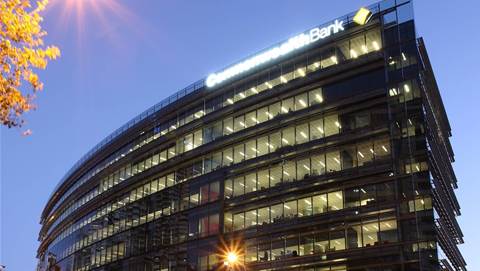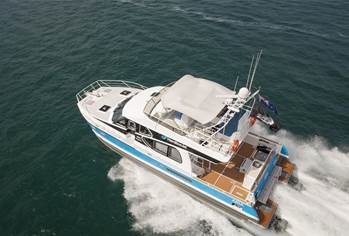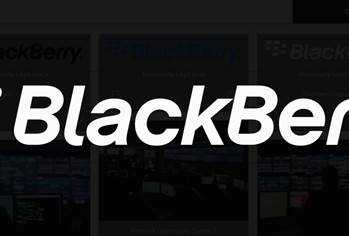Ask two of his most recent customers, and they will agree that ‘bare metal’ virtualisation is the best thing to hit the data centre since the Ethernet cable.
The first such customer, Versacold, was wanting to save space, consolidate servers and move them into a co-location centre; a complete technology refresh - the ideal scenario for virtualisation.
The data centre contained around 30 servers “which weren’t doing much”, says Geoff Mills, senior WAN administrator of Versacold, a refrigerated logistics company.
The 30 servers were replaced with eight blades in two chassis and a small SAN, all supplied by HP and the installation performed by VMWare integrator Oriel.
Four of the blades are VMWare servers running seven virtual machines (VMs), and after 11 days of operation there have been no major hiccups. “It’s been perfect so far,” says Mills, who had run a test environment for a month beforehand.
The only servers that weren’t virtualised were those running Citrix, which have a higher CPU utilisation. Concerns about performance came second to uncertainty over how well virtualisation would work, says Mills.
“For me and my boss it was a comfort factor. I had used VMWare for a workstation, but that’s a long way from the enterprise edition.”
The flawless transition to virtualisation and the average CPU usage on the VMWare servers (3 percent on the day of the interview) had provided reassurance on both fronts.
“Looking at the stats now, I’d say it would be safe putting [the Citrix servers] on VMWare and have three VMs on the one box,” says Mills.
The second customer, Darwin City Council, also claims to be another satisfied customer. The aim of its project was to contain capital costs after experiencing rapid growth, says Richard Iap, the Council’s IT manager.
The original set-up of 14 servers was virtualised onto one new server, which is only running at 50 percent capacity. A second server provides extra headroom for DR using VMWare’s VMotion, a program that automatically moves VMs between servers in the case of hardware failure.
Iap had also tested VMWare’s Workstation product and had studied white papers and tech-write ups before committing. Despite some familiarity with the technology, and replicating the production environment on a test server, the council still ran into one serious hurdle.
The virtualisation software proved to be incompatible with an HP tape backup system, and the robotics didn’t show up in the VM session. An Intel consultant guiding the installation was able to work out a solution.
The council spent around $80,000 in hardware and software but expects to bring in $160,000 in savings over three years. However, Iap expects those savings to be much higher based on his observations over the first four months.
Dell and Intel donated services to set up the installation, which Iap estimates saved $20,000.
Virtualisation is “definitely a space that small businesses can start looking at,” says Iap, though he cautions them to keep an eye on software costs involved in the migration and development phases.
However, the advice of early adopters is mostly ignored by Australian SMEs, which are taking the slow and steady approach.
Fear of complexity, migration issues and general ignorance are holding them back, as well as the real issues of cost, incompatibility and lack of virtualisation support from software vendors.
Some doubting Thomases question whether virtualisation is necessary in the short term at all.
“You don’t break the first rule of computing: If it’s working, leave it,” says IDC’s associate vice president, Asia/Pacific Storage, Graham Penn. The other rule of computing – keep it simple ¬– is truer for Australia’s many SMEs than for the enterprise, where a level of complexity is automatically assumed.
A lot of SMEs don’t need virtualisation because their computing requirements are too basic, says Penn. “Just because it’s a success story doesn’t mean everyone should adopt it.”
Virtualisation requires spending money ¬– sometimes quite a lot of money – to save money. “There are people costs, licence costs, maintenance costs, infrastructure costs,” says Penn.
Licences range from US$1000 per two CPUs for the starter edition of Virtual Infrastructure 3, and top out at US$5000 per two CPUs for the enterprise edition. Virtual Center, a management app essential for running more than one VMWare server, costs another US$5000. Mandatory 12-month maintenance charges add another US$1200 per app.
Even if the cost of software of manageable, the budget can double after replacing hardware.
The philosophy behind virtualisation is that you use half as much hardware, but work it twice as hard. In reality this means that the wonders of virtualisation are hamstrung if run on an SME’s current hardware, which is usually single core.
Dual core processors run 80 percent faster, which means plenty more power for virtual machines and a far lower cost per virtual machine. (VMWare, the only vendor of “bare metal” virtualisation software, charges the same for a licence whether it is running on a single or dual core processor.)
Space, power and security drivers aside, the upgrade to virtualisation is therefore most likely to occur over time as part of the SME refresh cycle.
Some resellers are working hard to bring the price of virtualisation down to SMEs’ budgets and tempt them into refreshing earlier.
VMWare systems integrator Oriel is developing a bundle consisting of two HP servers with a small SAN, two Infrastructure 3 enterprise licences and Virtual Center for less than $50,000. The bundle will be targeted “for all the five-server people who think they can’t do” virtualisation, says Oriel managing director Jack Wynne.
Oriel is also running a deal that bundles an HP DL-380 server with VMWare VI3 starter edition for under $9000.
However, a lack of education rather than cost is preventing SMEs from exploring the potential benefits of virtualisation. “That’s the hard thing, to get people to realise what [virtualisation] can do,” says Wynne.
VMWare’s longest serving local partner, Network Systems Integration, has had staff trained up in VMWare products since 2001, before the vendor had an Australian office.
Although an enthusiastic promoter of VMWare’s products, the integrator still receives most of its leads from the vendor itself and not its SME customers.
“A lot of people are still hesitant” to look at virtualisation, particularly in production environments, says NSI’s managing director, Ramon Ali. But “once someone virtualises, we’ve never had them go back,” he adds.
Ali says he believes the greatest obstacle to virtualisation is fear of the unknown. In-house IT staff running a conventional, three-tier environment where they can touch and feel each layer face a seismic shift in moving to one with virtual firewalls and virtual machines.
Virtualisation changes every-day procedures from a security perspective as well as an operational and support perspective. “They would have to go through a mindset change,” says Ali.
Virtualisation also works best with a storage area network (SAN), an area with its own arcane skills that could intimidate a first timer.
The reality is that these skills are largely unnecessary, as VMWare has hidden the command line behind graphical user interfaces. And yet many SMEs still think they have to develop a mid-range capability and understand Unix before virtualising their IT resources, says Ali.
And then there are real barriers to virtualisation, the first of which is migration.
Again, VMWare is working hard to ease the transition with its VMWare Converter application. The converter works well most of the time, says Ali, although online forums are busy discussing the several ways in which it doesn’t.
The easiest migrations are by companies running the latest apps on the latest hardware, which is unlikely to be the case in a smaller SME.
Businesses running old programs on Windows NT4 or Windows 95 are going to find the process a rough ride. “Managing legacy apps with legacy drivers, that’s where the problems come in,” says Ali.
Even if an app does run well in a virtual machine, some vendors, such as Sebel, may refuse to provide support – a deal breaker for many organisations regardless of size.
In some cases a work-around is necessary to appease the risk management division, such as a virtual to physical converter which can put the problem app back on a physical machine.
NSI recently installed this service within a power company which had decided that it had to receive the vendor support stamp at any cost.
And then there are some applications which are plain unsuited to virtualisation, no matter how smooth the migration.
VMWare works best at virtualising memory and CPU performance, which is around 85 percent that of a physical machine. However, disk input-output (I/O) is a big Achilles heel as it produces only 65 percent performance, according to Ali’s estimates.
These can include large Oracle and SQL databases or even just a file share.
Fortunately, few customers run these types of applications, says Oriel’s Wynne. “Maybe you’ve got one SQL server flogging its guts out,” but the rest of the servers are idling very low and are good candidates for virtualisation, says Wynne.
(Oriel’s own servers, which are all virtualised, average 7 percent CPU utilisation.)
The other weak spot is video. Infrastructure 3 doesn’t emulate video other than through a basic virtual 16-bit controller. Although it is possible to increase video buffer size, CAD apps and games are unusable.
The latest, graphically intensive version of Windows, Vista, can be virtualised without a problem. But Ali remembers one job at a large financial institution where a simple DOS program threw a spanner in the works.
The bank was consolidating 75 workstations ¬¬– slaves running a data reporting program called HiPortfolio ¬– to two ESX servers. The app opened a DOS window and rapidly ran through a list of file names at around 2500 a minute, too fast for a human eye to read.
However, the ESX servers, attempting to reproduce each command line graphically, ground to a halt ¬– even though the VMWare diagnostic tool showed the CPU, memory and I/O at idle. There was no diagnostic tool to show the video emulation process which had caused the shutdown.
The push for virtualisation will come from within IT departments as staff realise they can make their own jobs much easier and save their bosses money. The IT community recognises that this year, virtualisation is ready for the primetime, says Wynne.
The next time an SME has to upgrade its hardware, virtualisation will be a consideration for most of them. But few will move unless they have to.
“In many ways, SMEs demonstrate a lot of common sense in not moving to something that’s new, without the need,” says IDC’s Penn. “They don’t move until they have to, but when they do they move quickly.”



.png&h=140&w=231&c=1&s=0)
_(22).jpg&h=140&w=231&c=1&s=0)






 iTnews Executive Retreat - Security Leaders Edition
iTnews Executive Retreat - Security Leaders Edition











_(1).jpg&h=140&w=231&c=1&s=0)



